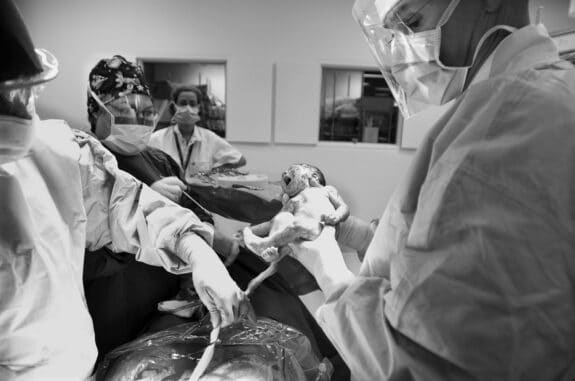For more than a decade there have been quite a few studies that have pointed to the benefits of delaying the clamping of your umbilical cord after delivery for full-term births. There have not, however, been many studies that look at if this practice could benefit babies born prematurely.
Now, an Australian-led study has found that delaying the clamping of the umbilical cord by 60 seconds of very premature babies at birth reduces the child’s risk of death or major disability.
The latest study, led by the University of Sydney, compared outcomes for over 1500 babies from the Australian Placental Transfusion Study where 767 caregivers aimed to delay the clamping by 60-seconds of babies born before 30 weeks compared with those whose cord was only clamped by 10 seconds after delivery.
The practice, which has shown to increase hemoglobin levels at birth and improve iron stores, reduced a child’s relative risk of death or major disability in early childhood by 17%, and a 30% reduction in mortality before the age of two.
It was also found that Fifteen percent fewer infants in the delayed-clamping group needed blood transfusions after birth.
Study lead Professor William Tarnow-Mordi, Head of Neonatal and Perinatal Trials at the Clinical Trials Centre and Professor of Neonatal Medicine in the Faculty of Medicine and Health, said waiting a minute before clamping will have a significant impact worldwide.
“It’s very rare to find an intervention with this sort of impact that is free and requires nothing more sophisticated than a clock. This could significantly contribute to the UN’s Sustainable Development goal to end preventable deaths in newborns and children under five — a goal which has really suffered during the pandemic,” he said.
“Applied consistently worldwide, aiming to wait a minute before cord clamping in very preterm babies who do not require immediate resuscitation could ensure that an extra 50,000 survive without major disability in the next decade,” said biostatistician Dr Kristy Robledo from the University of Sydney who led the two-year follow-up analysis.
“In other words, for every 20 very preterm babies who get delayed instead of immediate clamping, one more will survive without major disability.”
Delayed umbilical cord clamping is routine in full-term babies, however, doctors often cut the cord of preterm babies immediately so they can receive care immediately.
“Ten years ago, umbilical cords were routinely clamped quickly after a very preterm birth and the baby was passed to a pediatrician in case the child needed urgent help with breathing,” Professor Tarnow-Mordi said.
“But we now know that almost all very preterm babies will start breathing by themselves in the first minute if they are given that time.
“We think that, after delaying cord clamping, babies get extra red and white blood cells and stem cells from the placenta, helping to achieve healthy oxygen levels, control infection, and repair injured tissue.”
In 2017 the American College of Obstetricians and Gynecologists posted a Committee Opinion that said, for preterm infants, delayed umbilical cord clamping is associated with significant neonatal benefits, including improved transitional circulation, better establishment of red blood cell volume, decreased need for blood transfusion, and lower incidence of necrotizing enterocolitis and intraventricular hemorrhage.
Given this information, parents of babies who are born prematurely should discuss the option of late clamping with their birthing team.







